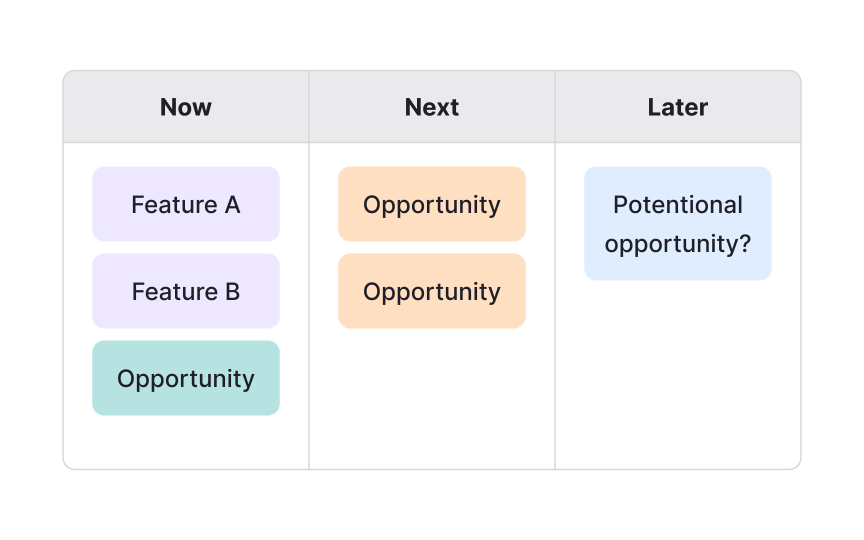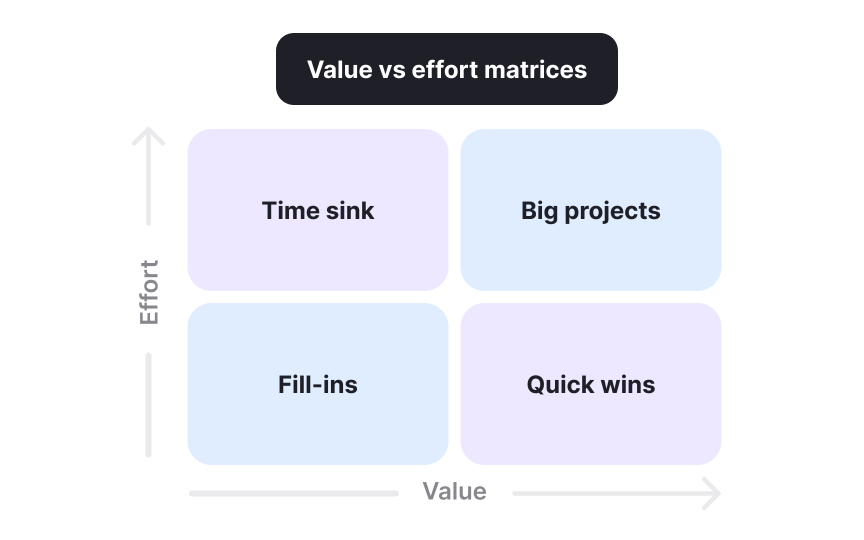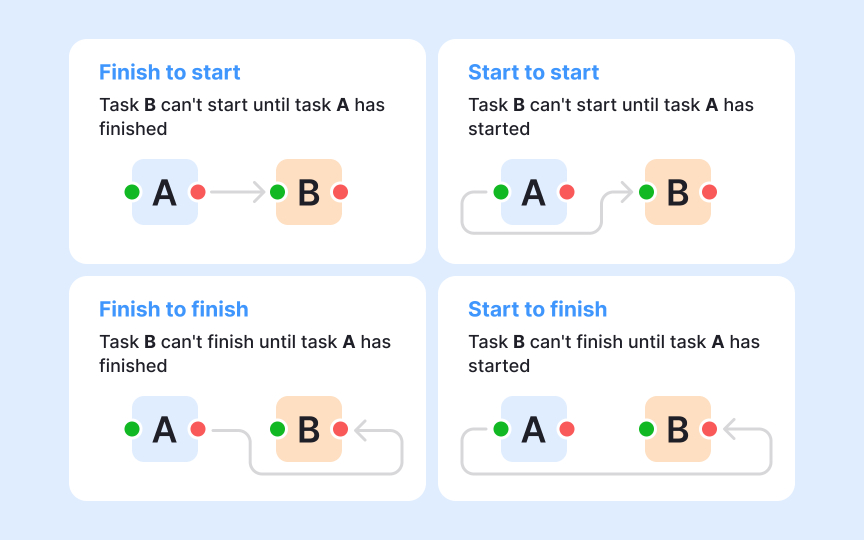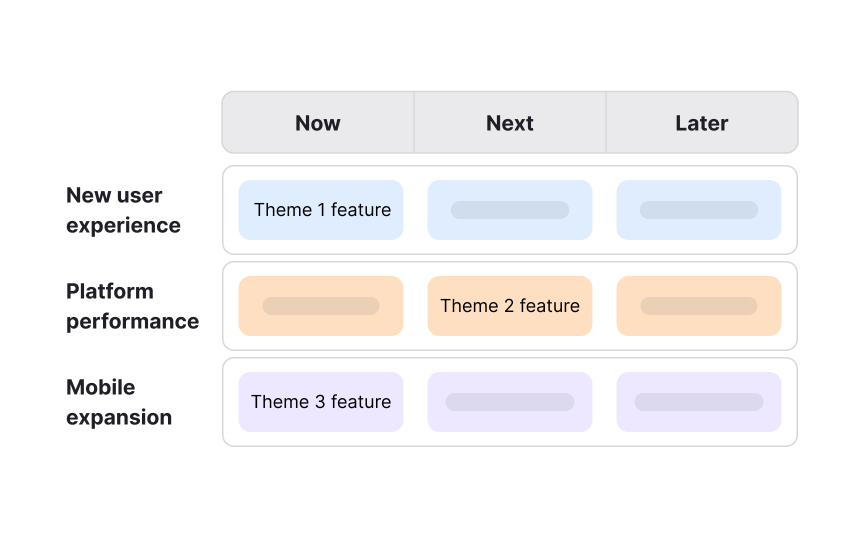Roadmap Planning & Prioritization
Build strategic product roadmaps that balance user needs, business goals, and technical feasibility
Product roadmaps transform vision into action by mapping out how products evolve over time. They balance strategic goals with market realities, technical constraints, and user needs. Effective roadmap planning starts with understanding your product's current state and desired future state, then charting the path between them. This involves gathering input from customers, stakeholders, and data analytics to identify opportunities. The real challenge lies in prioritization. With limited resources and endless possibilities, product managers must decide which features and improvements deliver the most value. Frameworks like RICE scoring, value vs. effort matrices, and opportunity scoring help make these decisions systematic rather than subjective. Roadmaps also serve as communication tools, aligning teams around shared goals and timelines. They need to be flexible enough to adapt to changing conditions yet stable enough to provide direction. Modern roadmap planning emphasizes outcomes over outputs, focusing on problems to solve rather than features to build.
Product roadmaps serve as strategic documents that outline how a product will evolve to achieve business goals and user needs.[1] They provide direction without being overly prescriptive, allowing teams to adapt as they learn. The best roadmaps focus on outcomes rather than outputs. For example, instead of listing "build a new login page," a roadmap might highlight the outcome: "increase user retention by 10% through improved onboarding."
Effective roadmap planning starts with clear objectives tied to company strategy. These objectives guide every decision about what to include and when. Teams should understand why each initiative matters and how it connects to larger goals. For instance, if a company objective is to expand into a new market, the roadmap might prioritize features like multi-language support or region-specific payment methods.
Modern roadmaps embrace flexibility while maintaining commitment to direction. They typically organize initiatives into distinct time horizons: "Now" (immediate priorities being worked on), "Next" (upcoming initiatives in the pipeline), and "Later" (future opportunities under consideration). This approach communicates priorities and trade-offs transparently, helping stakeholders understand resource allocation decisions while acknowledging that plans may evolve.
Value vs. effort analysis helps teams identify quick wins and avoid resource traps. By plotting
High-value, low-effort items become obvious quick wins to pursue immediately. Low-value, high-effort items should generally be avoided. The interesting discussions happen around high-value, high-effort initiatives that require strategic timing and resource planning.
Estimating value and effort requires
Product managers use various frameworks to make
Understanding their strengths helps you choose the right tool for each situation:
- RICE scoring model evaluates features using Reach (how many users it affects), Impact (the effect on those users), Confidence (how sure you are about your estimates), and Effort (time and resources needed). It produces a single score to rank
initiatives objectively. - MoSCoW method organizes features into Must-haves (essential), Should-haves (important but not critical), Could-haves (nice to have), and Won’t-haves (out of scope). This hierarchy is easy to share with stakeholders.[2]
- Kano model classifies features by how they affect customer satisfaction: basic needs (expected, absence causes dissatisfaction), performance features (more = better), and delighters (unexpected features that boost satisfaction).
Each framework works best in different contexts, and many teams combine approaches for comprehensive analysis.
Technical debt is the cost a team takes on when it chooses a quick or easy technical solution instead of the best long-term one. This can happen in any part, or a mix, of the product’s technical stack, like code, infrastructure, or architecture. Over time, this debt slows development, increases bugs, and makes future changes harder.[3] Like money, it “accumulates interest” in the form of extra work later: slower development, more bugs, and higher maintenance effort.
Not all technical debt is bad. Sometimes teams take on strategic debt to launch quickly. For example, a team might release a new signup flow using basic form validation to meet a marketing deadline, knowing they’ll need to improve error handling later.
Unmanaged debt grows fast and can block progress. Imagine a UI with inconsistent button styles from quick fixes. Adding new screens takes longer because developers must fix old inconsistencies first. Good teams dedicate 15–20% of development time to paying down debt. They focus on debt that slows future work or affects users. For instance, standardizing button styles and spacing before adding a new dashboard screen makes future updates smoother. Clear communication with stakeholders explains why some cycles focus on UI cleanup, for example, instead of new features.
Pro Tip: Track technical debt items in your backlog with clear business impact. This makes trade-off discussions with stakeholders concrete.
Dependencies add hidden complexity to product development. A feature that looks simple on its own might need several steps first: technical setups, infrastructure changes, or
For example, adding a new dark mode toggle in an app might seem easy, but it depends on:
- Updating the design system with dark color styles
- Adjusting existing screens to support the new theme
- Coordinating with QA to test across devices
- Updating
marketing screenshots to show dark mode
Visual dependency mapping helps teams see the critical path (steps that must happen in order) and where parallel work is possible. This makes timelines more realistic and resource allocation smarter.
Pro Tip: Build buffer time into sequences with multiple dependencies. The more handoffs required, the higher the risk of delays.
Theme-based roadmapping groups related
Themes communicate the "why" behind work more effectively than feature lists. "Improve checkout conversion" tells a clearer story than "Add express checkout, optimize form fields, reduce steps." This narrative helps teams make better decisions when implementation details change.
You can typically run 3-5 themes simultaneously, balancing different strategic priorities. Each theme gets allocated resources and success metrics. Teams can adjust specific solutions within themes based on learning, without changing overall direction or needing roadmap approval.
Roadmap planning involves balancing input from multiple groups: customers, sales, support, engineering, and executives. Each group has useful perspectives, but they also bring biases. The product manager’s job is to combine these viewpoints into a clear strategy while keeping expectations realistic. For example, sales might push for features that help close deals quickly, while engineering may flag technical constraints that make those features hard to build. Customers may request convenience features that don’t align with business goals. The PM must weigh all these
Structured input collection prevents decisions from being dominated by the loudest voices. Methods like regular feedback cycles, customer advisory boards, or analyzing usage data ensure everyone’s input is considered. Documenting where ideas come from helps explain decisions and shows stakeholders their feedback was reviewed.
Clear evaluation frameworks that align with the product vision and product strategy also help maintain fairness. For instance, a PM might use a scoring system like RICE that rates each proposed feature based on predetermined criteria. When stakeholders see this rationale, they are more likely to accept a “no” when a request doesn’t make it onto the roadmap.
Different audiences need different roadmap views. Engineers want technical dependencies and sprint details. Executives focus on strategic alignment and business impact. Customers care about solving their problems. Tailoring communication improves alignment and buy-in.
Internal roadmaps can show more detail and uncertainty than external versions. Public roadmaps build excitement but create commitment expectations. Modern roadmap tools let customers vote on features they want and suggest new ideas. This helps product managers understand what to build next. Many teams maintain multiple views: detailed internal planning, high-level internal communication, and carefully curated external messaging.
Timing and frequency of updates matter as much as content. Regular cadences reduce surprise and build trust. Change communication should explain why priorities shifted, not just what changed. This context helps stakeholders understand and support pivots rather than seeing them as failures.
Quarterly planning cycles balance long-term vision with short-term adaptability. This rhythm allows teams to commit to meaningful work while staying responsive to market changes. The process typically involves reflection, goal setting, and capacity planning.
Effective quarterly planning starts weeks before the quarter begins. Teams analyze previous results, gather stakeholder
Planning sessions should produce clear objectives, allocated resources, and success metrics. Teams need enough detail to start work confidently but not so much that adaptation becomes difficult. Buffer time for emergencies and
Pro Tip: Block calendar time for planning activities starting six weeks before quarter end. Rushed planning leads to poor decisions.
Roadmaps require regular updates to remain useful. Market conditions shift, customer needs evolve, and teams learn from shipped features. Rigid adherence to outdated plans wastes resources and misses opportunities. The challenge is updating thoughtfully without creating chaos.
Establish clear triggers for roadmap reviews beyond calendar intervals. Major customer feedback, competitive moves, or performance data might necessitate changes. Define what magnitude of change requires different approval levels to balance agility with stability.
Version control and change documentation matter for roadmap credibility. Teams should track what changed, when, and why. This history helps stakeholders understand evolution and builds confidence that changes stem from learning rather than indecision.
Pro Tip: Document pivot rationale in a decision log. Future team members will thank you for the context.
References
Topics
From Course
Share
Similar lessons

Roadmaps and Prioritization

Why You Need a Roadmap





















